
Wine Culture and Information since 2002 - Volume 22
 Wine Culture and Information since 2002 - Volume 22 |
|
Comparing BarberaFrom grape considered suited for the production of ordinary wines only to grape elected to the Olympus of enology, Barbera is today one of the most important wines of Italy |
|
The history of Barbera - the grape as well as the wines produced with it - seems like a fairy tale with a happy end, a sort of Cinderella who, from a humble and subordinate condition, becomes, because of a sort of magic, to the favorite of the prince, also reaching his palace in a golden carriage. Up to twenty years ago, talking about Barbera in fact meant talking about a humble and ordinary wine, one of the many which were produced in large quantities without caring about quality, a modest wine meant to be consumed every day without asking for more. After all, by considering the tendency of Barbera to make rich yields and to adapt itself in different types of soils, making wine in considerable quantities was not difficult at all. With time things changed thanks to some “pioneer and nonconformist” producers, convinced by the fact with that grape, so harsh and tenacious, was possible to make a noble and valued wine, a wine capable of surprising for its class and elegance, something which was impossible to get - apparently - from Barbera. Despite all that, the impossible has turned into reality and today Barbera is one of the most representative wines of Piedmont's enology and of Italy. By adopting quality viticultural practices and strict wine making techniques, Barbera is today one of those wines which can be compared with no fears with the great wines of the world, most of the times being the winner of the challenge. With its characteristic acidity - something truly different from, for example, the roundness of Merlot - Barbera is a grape capable of making full bodied wines, also supported by its richness in tannins, with intense colors and almost impenetrable transparencies, elegance of aromas that with time can get a character of complexity, something which can be found in great wines only. Because of its acidity and its content in tannins, Barbera grape is particularly suited for the aging in cask - frequently the barrique - a process during which the wine gets a better elegance and finesse, until reaching a very good organoleptic balance also thanks to the proper quantity of alcohol.
|
|
Barbera grape is one of the most common varieties in Piedmont - its homeland - and its presence is very important in other Italian regions as well, such as Lombardy, Emilia Romagna, Veneto, Umbria and Sardinia. Robust and strong, 100% Barbera wines can be remembered for their personality. Barbera grape can also be recognized when it is used together with other grapes: its pleasing and typical crispness is always unmistakable and contributes in a determinant way to make a wine more lively and particular. Of course, crispness is not the only interesting quality of Barbera. The aromatic profile of Barbera has in fact other good surprises: characterized in youth by aromas of red and black berried fruits and flowers, with time it develops extremely complex and balsamic aromas, of great elegance and finesse. Thanks to acidity and the content in polyphenols, as well as alcohol, Barbera wines can stand to long period of aging in bottle, while giving the wine a rounder and less “harsh” character, where crispness, which will always be evident, will get milder in favor of smoothness.
The wines selected for our comparative tasting are produced in three different areas of Piedmont: Asti, Monferrato and Alba, the three most typical areas for the production of Barbera. The goal of our comparative tasting will be the understanding of the identifying organoleptic qualities of Barbera, the differences among the three wines and the influence of wood. The first wine selected for our tasting is Accornero's Barbera del Monferrato Superiore Bricco Battista, aged in barrique for about 18 months. The second wine is Matteo Correggia's Barbera d'Alba Marun, aged for about 20 months in cask. The last wine of our comparative tasting is Prunotto's Barbera d'Asti Costamiole, aged for 12 months in barrique, a shorter period than the one used for the previous wines. The three wines will be tasted at a temperature of 18° C (65° F), in order to favor both the development of aromas as well as the right appreciation of gustatory qualities, in particular crispness. For our comparative tasting, as usual, we will use three ISO tasting glasses.
|
||||||||
|
The characteristics of the aspect of wines produced with Barbera depend on - as for any other wine - the vinification technique, quality of grapes and aging time. Barbera grape is rich in coloring substances therefore the transparency of its wines - quality wines produced with viticultural criteria of low yields per hectare - will be pretty low, sometimes impenetrable to light as well. The color of Barbera may vary from intense and brilliant ruby red from intense garnet red hues. Nuances in Barbera get the same colors of hue: in youth they are characterized by evident ruby red color up to getting garnet red hues. After many years of aging in bottle - that in Barbera can also be of more than 10 years - nuances can also get a brick orange red hue. The first wine of which we will evaluate aspect is Matteo Correggia's Barbera d'Alba Marun. By tilting the glass over a white surface - such as, for example, a sheet of paper or a white tablecloth - we will evaluate, at the base of the glass, the hue of color. It will be observed an intense ruby red color with a pretty low transparency and, by observing the edge of the liquid mass towards the opening of the glass, will be noticed ruby red nuances. Also the color of Prunotto's Barbera d'Alba Costamiole is very similar to the previous wine - intense ruby red - however showing garnet red nuances. Also in this wine the transparency is pretty low, confirming the good contents in coloring substances found in Barbera grape. Let's now pass to the evaluation of the last of the three wines: Accornero's Barbera del Monferrato Superiore Bricco Battista. By holding the glass tilted over a white surface and observing the base of the glass, we will notice a deep ruby red color, pretty dark, and garnet red nuances. It should be noticed how the transparency in this wine is pretty low, practically impenetrable to light.
|
|
Wines produced with Barbera offer to the nose of taster, a very interesting aromatic profile, of fresh fruits and flowers which gets pretty complex after a patient aging in bottle for some years. Among the most characteristic fruit aromas in Barbera is certainly found cherry - which in many cases can also become black cherry - plum and blackberry, whereas among the most typical floral perceptions can be found violet. Because of its organoleptic qualities, in particular crispness and astringency, Barbera grape is generally fermented or aged in cask - frequently in barrique as well - therefore in these wines can also be perceived tertiary aromas, such as vanilla, licorice, tobacco, chocolate, coffee, cocoa, as well as balsamic aromas of menthol and eucalyptus. After some years of aging in bottle, the aromas of fruits tend to get jam qualities and it is not rare to find complex aromas of leather. We will begin the olfactory evaluation from Accornero's Barbera del Monferrato Superiore Bricco Battista. By holding the glass in vertical position and without swirling, we will begin from the evaluation of opening aromas. The first smell will allow the perception of the aromas of black cherry, plum and violet. We will now proceed with swirling the glass in order to favor a proper oxygenation of the wine while favoring the proper development of other aromas, therefore we will do a second smell. This second examination will allow us the perception of aromas of blueberry, vanilla, licorice, tobacco, carob and mace as well as a pleasing and elegant hint of chocolate. It should be noticed the effect of the aging in wood in this wine - about 18 months in barrique - which gives the wine tertiary aromas which are well perceptible in the overall organoleptic profile without covering balance and primary qualities of Barbera. Let's now pass to the second wine of our tasting: Prunotto's Barbera d'Asti Costamiole. Opening aromas, evaluated by holding the glass in vertical position and without swirling, will be characterized by cherry, plum, blueberry and vanilla, whereas the second smell - after having swirled the glass - will complete the aromatic profile with blackberry, black currant, cyclamen, tobacco, licorice and cocoa followed by pleasing and elegant hints of mace, menthol and clover. It should be noticed, also in this case, how the contribution of wood - 12 months in barrique - gives the wine pleasing tertiary aromas without disturbing the perception and balance of other aromas. Opening aromas of the third wine of our comparative tasting - Matteo Correggia's Barbera d'Alba Marun - will be characterized by aromas of black cherry, plum and violet, typical in Barbera and similar to the two previous wines. After having swirled the glass, we will proceed with the second smell which will allow the perception of aromas of blueberry, blackberry, vanilla, tobacco and eucalyptus, followed by elegant hints of black pepper, nutmeg and cocoa.
|
||||
|
Wines produced with Barbera grapes have pretty particular organoleptic qualities, giving the wine an absolutely unique personality. The remarkable personality of Barbera is also found on the taste, so different and particular from the concept which one usually has about a red wine. There are two gustatory qualities of Barbera which make these wines particular: full body and appreciable crispness. The appreciable acidity of Barbera is in fact a pretty unusual quality which could surprise many, however it is a very interesting quality requiring proper organoleptic factors in order to be balanced, such as alcohol and roundness given by the aging in wood, also needed to balance astringency. Barbera is in fact characterized by a pretty strong astringency, therefore the aging in wood and the subsequent aging in bottle, are always useful practices with wines produced with this grape. We will begin the gustatory evaluation from Accornero's Barbera del Monferrato Superiore Bricco Battista: the tannic attack anticipates the remarkable structure of this wine, a sensation which will be followed by the appreciable crispness: qualities which are perfectly balanced both by alcohol and the aging in barrique. Also the attack of the second wine of our comparative tasting - Prunotto's Barbera d'Asti Costamiole - is characterized by a pretty tannic sensation and pleasing crispness which will be followed by the perception of the pseudo caloric sensation of alcohol and pleasing roundness: a wine with a great structure and excellent balance. Let's now pass to the gustatory analysis of the third wine: Matteo Correggia's Barbera d'Alba Marun. The attack of this wine - just like the two previous wines - will be characterized by an evident astringency produced by tannins contained in the wine and a pleasing and balanced crispness, also in this case, typical in Barbera. The excellent balance of this wine - of remarkable structure - is ensured by alcohol and the roundness given by the aging in cask.
|
|
The three Barberas selected for our comparative tasting fully express the quality of this excellent Piedmont's grape, although keeping the typical character of the areas from which they come. The finish of Accornero's Barbera del Monferrato Superiore Bricco Battista is persistent and leaves in the mouth flavors of black cherry, plum and blueberry. Also the finish of the second wine - Prunotto's Barbera d'Asti Costamiole - is persistent with pleasing and refined flavors of cherry, plum and blackberry. The finish of the third wine, Matteo Correggia's Barbera d'Alba Marun is persistent with long and elegant flavors of black cherry, plum, blueberry and blackberry. It should be noticed how in all the three wines the consistency of the structure can be perceived after the wine has been swallowed, as well as the pleasing sensation of crispness. Barbera has come a long way, after a history centuries long and after having been subjected to deplorable logic of bulk production where quality was never considered, this grape confirms today its great elegance and class. Thanks to the obstinacy and the commitment of many producers - such as the ones of the wines of our comparative tasting - Barbera is today considered, with full merit, among the best red wines of Italy.
|
Wines of the Month |
|
|
|
Score legend Prices are to be considered as indicative. Prices may vary according to the country or the shop where wines are bought |
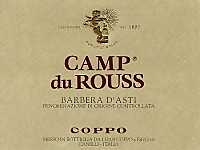
|
|
Barbera d'Asti Camp du Rouss 2004 |
|
| Coppo (Piedmont, Italy) | |
| Grapes: Barbera | |
| Price: € 12.00 | Score: |
| The wine shows an intense ruby red color and nuances of purple red, little transparency. The nose denotes intense, clean and pleasing aromas which start with hints of cherry, plum and black currant followed by aromas of blueberry, violet, pink pepper and vanilla. The mouth has good correspondence to the nose, a tannic attack and pleasing crispness, however balanced by alcohol, good body, intense flavors. The finish is persistent with flavors of plum and cherry. Barbera d'Asti Camp du Rouss ages for 12 months in barrique followed by 4 months of aging in bottle. | |
| Food Match: Stuffed pasta, Stewed meat with mushrooms, Roasted meat | |
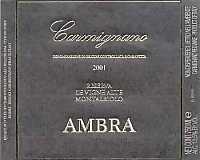
|
|
Carmignano Riserva Le Vigne Alte Montalbiolo 2001 |
|
| Fattoria Ambra (Tuscany, Italy) | |
| Grapes: Sangiovese (70%), Canaiolo Nero (20%), Cabernet Sauvignon (10%) | |
| Price: € 24.00 | Score: |
| This wine shows a brilliant ruby red color and nuances of garnet red, moderate transparency. The nose denotes intense, clean, pleasing and refined aromas which start with hints of black cherry, plum and dried violet followed by aromas of blueberry, blackberry, vanilla, tobacco, licorice, chocolate, cinnamon and menthol. The mouth has good correspondence to the nose, a tannic attack and however balanced by alcohol, good body, intense flavors, agreeable. The finish is persistent with flavors of black cherry, plum and blueberry. Carmignano Riserva Le Vigne Alte Montalbiolo ages for 24 months in cask. | |
| Food Match: Roasted meat, Stewed and braised meat, Hard cheese | |
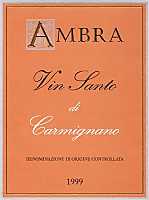
|
|
Vin Santo di Carmignano 1999 |
|
| Fattoria Ambra (Tuscany, Italy) | |
| Grapes: Trebbiano Toscano (90%), San Colombano (10%) | |
| Price: € 25.00 - 375ml | Score: |
| The wine shows an intense amber yellow color and nuances of amber yellow, transparent. The nose reveals intense, clean, pleasing, refined and elegant aromas that start with hints of raisin, dried fig and almond followed by aromas of dried apricot, date, caramel,leather, coffee, candied fruits, honey, nail polish and vanilla. The mouth has good correspondence to the nose, a sweet attack and however balanced by alcohol, full body, intense flavors, agreeable roundness. The finish is persistent with flavors of raisin, dried fig and almond. A well made wine. Vin Santo di Carmignano ages for 6 years in small 50 liters barrels. | |
| Food Match: Hard and piquant cheese, Dried fruits and jam tarts | |
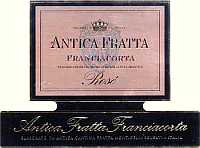
|
|
Franciacorta Rosé |
|
| Antica Fratta (Lombardy, Italy) | |
| Grapes: Chardonnay, Pinot Noir | |
| Price: € 18.00 | Score: |
| Franciacorta Rosé shows a brilliant onion skin pink and nuances of onion skin pink, very transparent, fine and persistent perlage. The nose denotes intense, clean, pleasing and refined aromas that start with hints of cherry, raspberry and bread crust followed by aromas of strawberry, banana, hawthorn, tangerine, yeast, apple and pink grapefruit. The mouth has good correspondence to the nose, an effervescent and crisp attack, however balanced by alcohol, good body, intense flavors, agreeable. The finish is persistent with flavors of cherry, raspberry and strawberry. Franciacorta Rosé ages for at least 24 months in bottle on its lees. | |
| Food Match: Stuffed pasta, Roasted fish, Roasted white meat | |
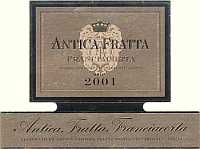
|
|
Franciacorta Brut Millesimato 2001 |
|
| Antica Fratta (Lombardy, Italy) | |
| Grapes: Chardonnay | |
| Price: € 20.00 | Score: |
| This Franciacorta shows a pale golden yellow color and nuances of straw yellow, very transparent, fine and persistent perlage. The nose reveals intense, clean, pleasing, refined and elegant aromas which start with hints of apple, plum and banana followed by aromas of hazelnut, hawthorn, grapefruit, bread crust, yeast, pineapple, butter and praline. The mouth has good correspondence to the nose, an effervescent and crisp attack, however balanced by alcohol, good body, intense flavors, agreeable. The finish is persistent with flavors of apple, plum and grapefruit. A well made wine. Franciacorta Brut Millesimato ages in bottle on its lees for at least 48 months. | |
| Food Match: Roasted fish, Stuffed pasta, Roasted white meat | |
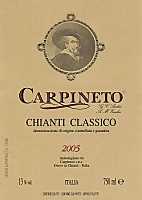
|
|
Chianti Classico 2005 |
|
| Carpineto (Tuscany, Italy) | |
| Grapes: Sangiovese (90%), Canaiolo Nero (10%) | |
| Price: € 9.00 | Score: |
| This Chianti Classico shows an intense ruby red color and nuances of ruby red, moderate transparency. The nose reveals intense, clean, pleasing and refined aromas which start with hints of plum and black cherry followed by aromas of violet, blackberry, blueberry, carob and vanilla. The mouth has good correspondence to the nose, a tannic attack and however balanced by alcohol, good body, intense flavors. The finish is persistent with flavors of black cherry, plum and blackberry. This Chianti Classico ages for 4-6 months in cask. | |
| Food Match: Roasted meat, Broiled meat and barbecue, Stewed meat with mushrooms | |
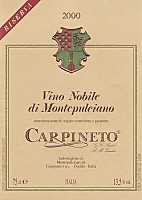
|
|
Vino Nobile di Montepulciano Riserva 2000 |
|
| Carpineto (Tuscany, Italy) | |
| Grapes: Prugnolo Gentile (90%), Canaiolo Nero (10%) | |
| Price: € 16.00 | Score: |
| This wine shows an intense ruby red color and nuances of garnet red, moderate transparency. The nose denotes intense, clean, pleasing and refined aromas which start with hints of black cherry, plum and violet followed by aromas of blueberry, vanilla, tobacco, pink pepper, licorice, carob and mace. The mouth has good correspondence to the nose, a tannic attack and however balanced by alcohol, good body, intense flavors. The finish is persistent with flavors of plum, black cherry and blueberry. Vino Nobile di Montepulciano Riserva ages for 2 years in cask followed by at least 12 months of aging in bottle. | |
| Food Match: Roasted meat, Braised and stewed meat, Game, Hard cheese | |
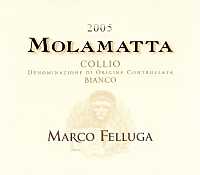
|
|
Collio Bianco Molamatta 2005 |
|
| Marco Felluga (Friuli Venezia Giulia, Italy) | |
| Grapes: Tocai Friulano, Ribolla Gialla, Pinot Blanc | |
| Price: € 13.70 | Score: |
| Molamatta shows a brilliant straw yellow color and nuances of greenish yellow, very transparent. The nose denotes intense, clean, pleasing and refined aromas which start with hints of pear, apple and plum followed by aromas of hawthorn, broom, pineapple, almond, peach and vanilla. The mouth has good correspondence to the nose, a crisp attack and however balanced by alcohol, good body, intense flavors, agreeable. The finish is persistent with flavors of apple, plum and pear. A well made wine. The Pinot Blanc used for the production of Collio Bianco Molamatta ferments in barrique. | |
| Food Match: Pasta and risotto with fish and vegetables, Eggs, Broiled crustaceans, Sauteed fish | |
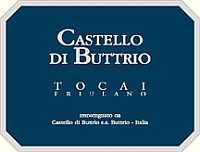
|
|
Colli Orientali del Friuli Tocai Friulano 2005 |
|
| Castello di Buttrio (Friuli Venezia Giulia, Italy) | |
| Grapes: Tocai Friulano | |
| Price: € 8.00 | Score: |
| The wine shows a pale golden yellow color and nuances of straw yellow, very transparent. The nose denotes intense, clean, pleasing and refined aromas which start with hints of apple, plum and grapefruit followed by aromas of citrus fruits, hawthorn, almond, broom, pineapple, peach and pear. The mouth has good correspondence to the nose, a crisp attack and however balanced by alcohol, good body, intense flavors, agreeable. The finish is persistent with flavors of apple, plum and almond. A well made wine. A small part of this wine ferments in cask and ages in steel tanks for about 8 months. | |
| Food Match: Pasta with fish, Roasted and broiled fish, Roasted white meat | |
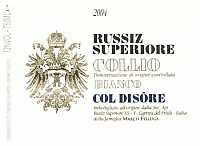
|
|
Collio Bianco Col Dis˘re 2004 |
|
| Russiz Superiore (Friuli Venezia Giulia, Italy) | |
| Grapes: Tocai Friulano, Ribolla Gialla, Pinot Blanc, Sauvignon Blanc | |
| Price: € 20.00 | Score: |
| Collio Bianco Col Dis˘re shows a brilliant straw yellow color and nuances of straw yellow, very transparent. The nose reveals intense, clean, pleasing, refined and elegant aromas which start with hints of pear, apple and pineapple followed by aromas of broom, hawthorn, litchi, almond, acacia, grapefruit, banana, mettle, peach, sage, plum and vanilla. The mouth has very good correspondence to the nose, a crisp attack and however balanced by alcohol, good body, intense flavors, agreeable. The finish is very persistent with long flavors of apple, grapefruit and pineapple. A well made wine. Collio Bianco Col Dis˘re ages for 12 months in cask followed by about 12 months of aging in bottle. | |
| Food Match: Roasted fish, Roasted white meat, Stuffed pasta | |
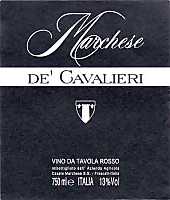
|
|
Marchese de' Cavalieri 2002 |
|
| Casale Marchese (Latium, Italy) | |
| Grapes: Cabernet Sauvignon, Merlot | |
| Price: € 14.00 | Score: |
| This wine shows an intense ruby red color and nuances of ruby red, moderate transparency. The nose denotes intense, clean, pleasing and refined aromas that start with hints of plum, black cherry and blueberry followed by aromas of black currant, violet, carob, pink pepper and vanilla. The mouth has good correspondence to the nose, a tannic attack and pleasing roundness, however balanced by alcohol, good body, intense flavors. The finish is persistent with flavors of black cherry, plum and blueberry. Marchese de' Cavalieri ages for 12 months in barrique. | |
| Food Match: Broiled meat and barbecue, Roasted meat, Stewed meat with mushrooms, Hard cheese | |
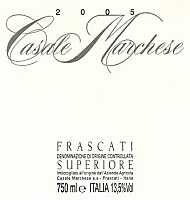
|
|
Frascati Superiore 2005 |
|
| Casale Marchese (Latium, Italy) | |
| Grapes: Malvasia del Lazio, Trebbiano Giallo, Malvasia di Candia, Bonvino | |
| Price: € 6.00 | Score: |
| This Frascati Superiore shows a pale straw yellow color and nuances of greenish yellow, very transparent. The nose reveals intense, clean, pleasing and refined aromas that start with hints of pear, plum and hawthorn followed by aromas of apple, citrus fruits, broom and almond. The mouth has good correspondence to the nose, a crisp attack and however balanced by alcohol, good body, intense flavors. The finish is persistent with flavors of pear, plum and almond. | |
| Food Match: Pasta and risotto with fish and crustaceans, Stewed fish, Broiled crustaceans | |
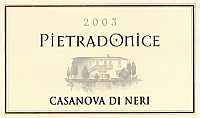
|
|
Sant'Antimo Rosso PietradOnice 2003 |
|
| Casanova di Neri (Tuscany, Italy) | |
| Grapes: Cabernet Sauvignon (90%), Sangiovese (10%) | |
| Price: € 55.00 | Score: |
| This wine shows an intense ruby red color and nuances of ruby red, little transparency. The nose denotes intense, clean, pleasing, refined and elegant aromas which start with hints of black cherry, black currant and plum followed by aromas of blueberry, violet, vanilla, tobacco, licorice, chocolate, cedar wood, bell pepper, mace and menthol. The mouth has good correspondence to the nose, a tannic attack and however balanced by alcohol, full body, intense flavors. The finish is persistent with flavors of black cherry, plum and black currant. A well made wine. Sant'Antimo Rosso PietradOnice ages for 18 months in barrique. | |
| Food Match: Game, Braised and stewed meat, Roasted meat, Hard cheese | |
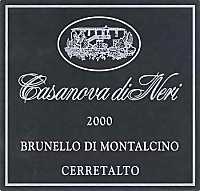
|
|
Brunello di Montalcino Cerretalto 2000 |
|
| Casanova di Neri (Tuscany, Italy) | |
| Grapes: Sangiovese | |
| Price: € 85.00 | Score: |
| Brunello di Montalcino Cerretalto shows an intense ruby red color and nuances of garnet red, little transparency. The nose reveals intense, clean, pleasing, refined and elegant aromas which start with hints of plum, black cherry and blackberry followed by aromas of violet, vanilla, blueberry, licorice, tobacco, cocoa, coffee, clover, mace and menthol. The mouth has very good correspondence to the nose, a tannic attack and however balanced by alcohol, full body, intense flavors, agreeable roundness. The finish is very persistent with long flavors of black cherry, plum and blackberry. A well made wine. Brunello di Montalcino Cerretalto ages for 27 months in barrique followed by at least 36 months of aging in bottle. | |
| Food Match: Game, Roasted meat, Braised and stewed meat, Hard cheese | |
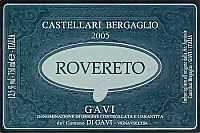
|
|
Gavi di Gavi Rovereto Vignavecchia 2005 |
|
| Castellari Bergaglio (Piedmont, Italy) | |
| Grapes: Cortese | |
| Price: € 11.00 | Score: |
| This wine shows a brilliant golden yellow color and nuances of straw yellow, very transparent. The nose denotes intense, clean, pleasing and refined aromas that start with hints of apple, plum and pear followed by aromas of hawthorn, lemon, pineapple, broom, peach and almond. The mouth has good correspondence to the nose, a crisp attack and however balanced by alcohol, good body, intense flavors, agreeable. The finish is persistent with flavors of apple, plum and pear. Gavi di Gavi Rovereto Vignavecchia ages for at least 3 months in bottle. | |
| Food Match: Fried fish, Pasta and risotto with vegetables and crustaceans, Dairy products, Sauteed fish, Eggs | |
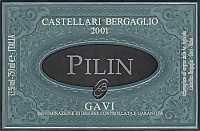
|
|
Gavi Pilin 2001 |
|
| Castellari Bergaglio (Piedmont, Italy) | |
| Grapes: Cortese | |
| Price: € 16.00 | Score: |
| Gavi Pilin shows an intense golden yellow color and nuances of golden yellow, very transparent. The nose reveals intense, clean, pleasing, refined and elegant aromas which start with hints of quince, plum and almond followed by aromas of ripe banana, apricot jam, hawthorn, broom, lavender, honey, pear, grapefruit and vanilla. The mouth has good correspondence to the nose, a crisp attack and pleasing smoothness, however balanced by alcohol, good body, intense flavors, agreeable. The finish is persistent with flavors of quince, plum, honey and almond. A well made wine. Gavi Pilin is produced with slightly dried grapes, ages for 12 months in barrique followed by 2 years of aging in bottle. | |
| Food Match: Roasted fish, Fish and mushrooms soups, Stuffed pasta, Roasted white meat | |

|
|
Colli di Faenza Sangiovese Col Mora 2001 |
|
| Rontana (Emilia Romagna, Italy) | |
| Grapes: Sangiovese | |
| Price: € 11.00 | Score: |
| The wine shows a brilliant ruby red color and nuances of garnet red, moderate transparency. The nose denotes intense, clean, pleasing and refined aromas that start with hints of plum, black cherry and blueberry followed by aromas of raspberry, violet, cocoa and vanilla. The mouth has good correspondence to the nose, a slightly tannic attack and pleasing crispness, however balanced by alcohol, good body, intense flavors. The finish is persistent with flavors of plum, black cherry and blueberry. | |
| Food Match: Stuffed pasta with mushrooms, Sauteed meat, Cold cuts, Hard cheese | |

|
|
Colli di Faenza Rosso Riserva Colle Torre Monte 2001 |
|
| Rontana (Emilia Romagna, Italy) | |
| Grapes: Cabernet Sauvignon (40%), Sangiovese (40%), Merlot (20%) | |
| Price: € 18.00 | Score: |
| The wine shows an intense ruby red color and nuances of garnet red, little transparency. The nose reveals intense, clean, pleasing and refined aromas that start with hints of plum, black cherry and black currant followed by aromas of blueberry, violet, vanilla, tobacco, mace, cocoa and menthol. The mouth has good correspondence to the nose, a tannic attack and however balanced by alcohol, good body, intense flavors, agreeable. The finish is persistent with flavors of black cherry, plum and black currant. Colle Torre Monte ages for 20 months in barrique followed by at least 10 months of aging in bottle. | |
| Food Match: Roasted meat, Braised and stewed meat, Hard cheese | |
|
||||||||
|
DiWineTaste Polls
|
| |||||||
Privacy Policy | |||||||


| Copyright © 2002-2024 Antonello Biancalana, DiWineTaste - All rights reserved |
| All rights reserved under international copyright conventions. No part of this publication and of this WEB site may be
reproduced or utilized in any form or by any means, electronic or mechanical, without permission in writing from DiWineTaste. |